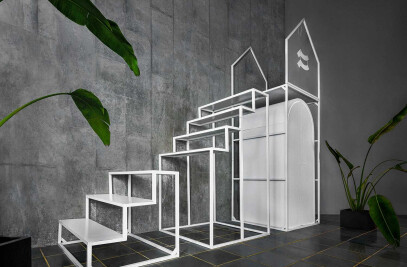The Common Gardens of Gandhi urban renovation project has received acclamation as the 3rd place in the private competition held by the Renovation Organization of Tehran with the intent to develop a pathway that could link two highly active and important areas in Tehran.
This project has a close connection to the neighboring green areas and tends to set an expandable design principle based on the concept of a “Micro Garden” to retrieve the street from cars and give it back to the citizens.
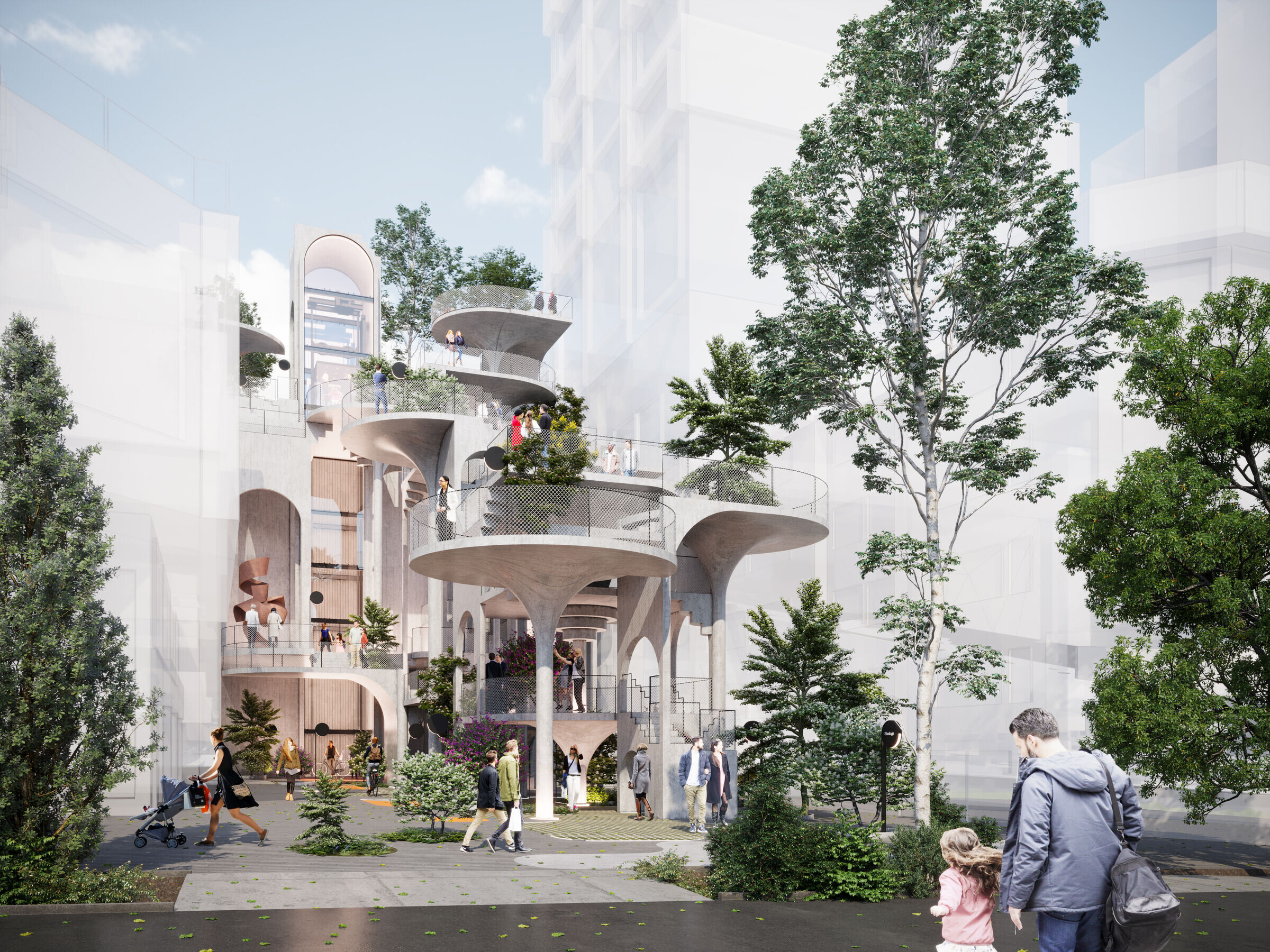
The site is located on the east side of District 6 of Tehran with an East-West view corridor. The position of Vali-Asr Street, the main historical urban spine of the city on the West side, and Abbas Abad green lands on the East side of the project and the vital role of the connection axis in-between, which was seen in the masterplan of Tehran, and finally the occasional visual openings towards the Alborz mountains in the North, forms a unique situation for this project. What we are facing today is recognizing the site as an urban destination rather than a connection path from Vali-Asr to the Abbas Abad lands.
The project has a close connection to the neighboring green areas (Vali-e-Asr Street and the Abbas Abad hills) and tends to set an expandable design principle based on the concept of a “Micro Garden” to retrieve the street from cars and give it back to the citizens.
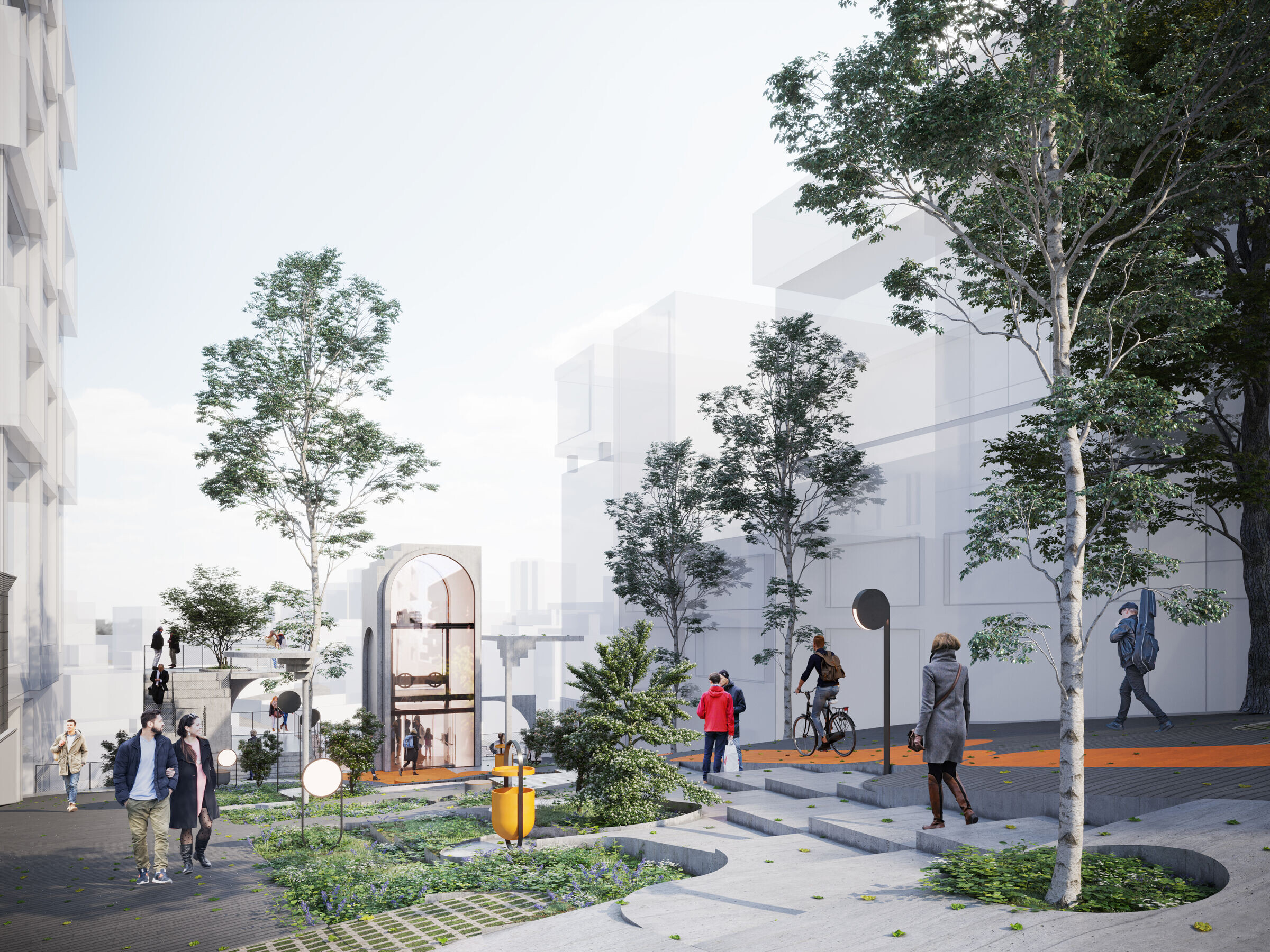
The pervasive design could be expanded throughout the whole neighborhood and activate the spatial potential of 6th and Shafagh dead-ends and Palizvani street altogether.
This project is designed considering four different layers: The geographical layer, the infrastructural layer, the layer of specific landmarks in the design area, and the layer of functional (office-residential) buildings. in this manner, the designed space is defined within the common space between private spaces, geographical instances, green spaces, and certain centers in between the two prominent geo-political locations of the city.
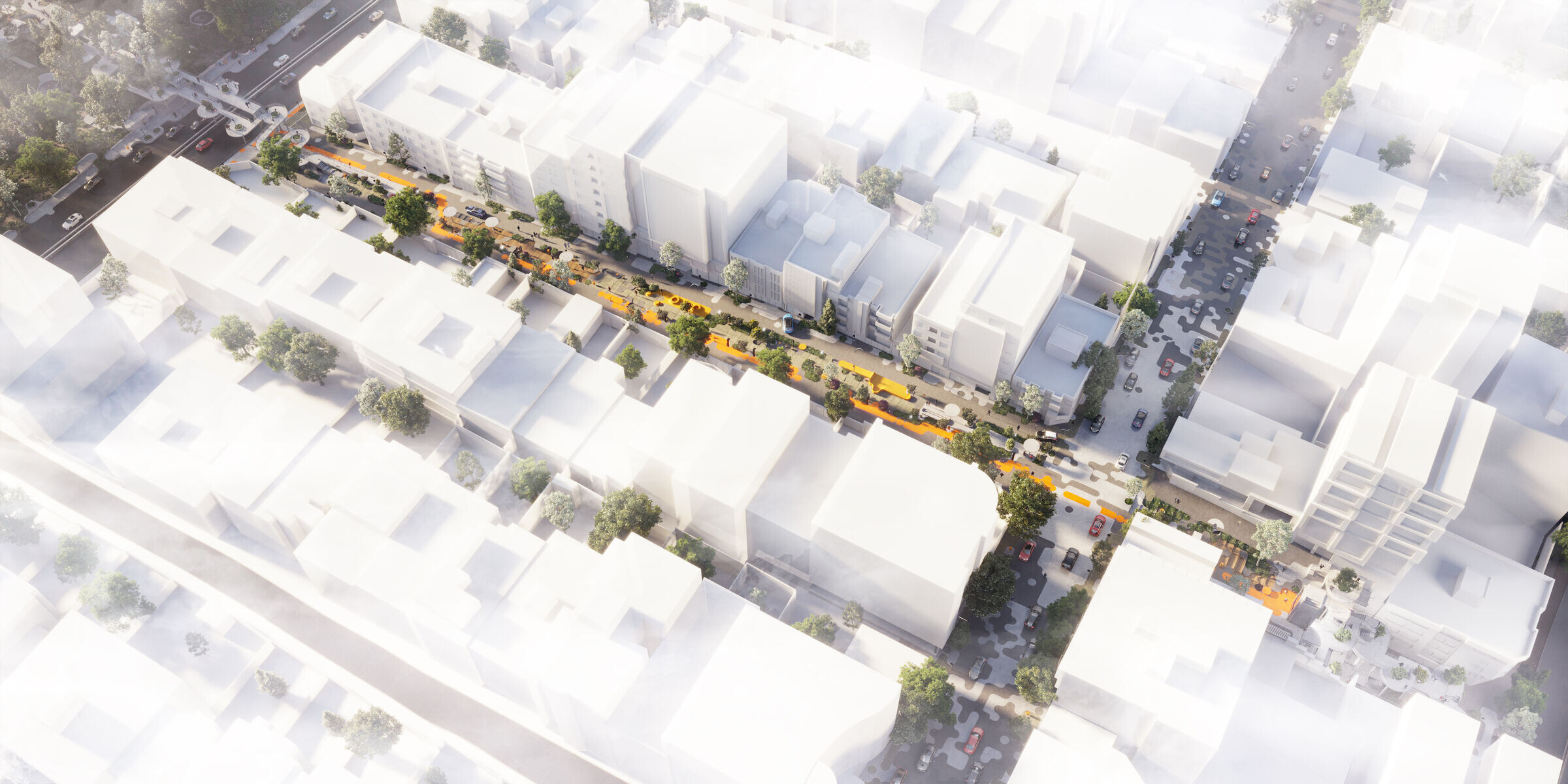
The design was based on multiple fundamental propositions:
· Common Garden
The project is an effort to convey and transfer the concept of “Garden”. The intrinsic disparities between the meaning of the contemporary garden and its remote meaning in the old ages lie in their communal characteristics.
· Terrace GardenThe concept of terrace gardens provides a suitable solution for resolving the height differences between Vali-Asr and Gandi streets and maintaining a smooth transition for the path.

· Geometric Patterns
The project follows a simple geometrical logic. Using a modular algorithm enabled a simple and attractive formal solution that could fulfill every need and aim of the project. In the meantime, it creates a complex and inviting space on a human scale that longs to be discovered.
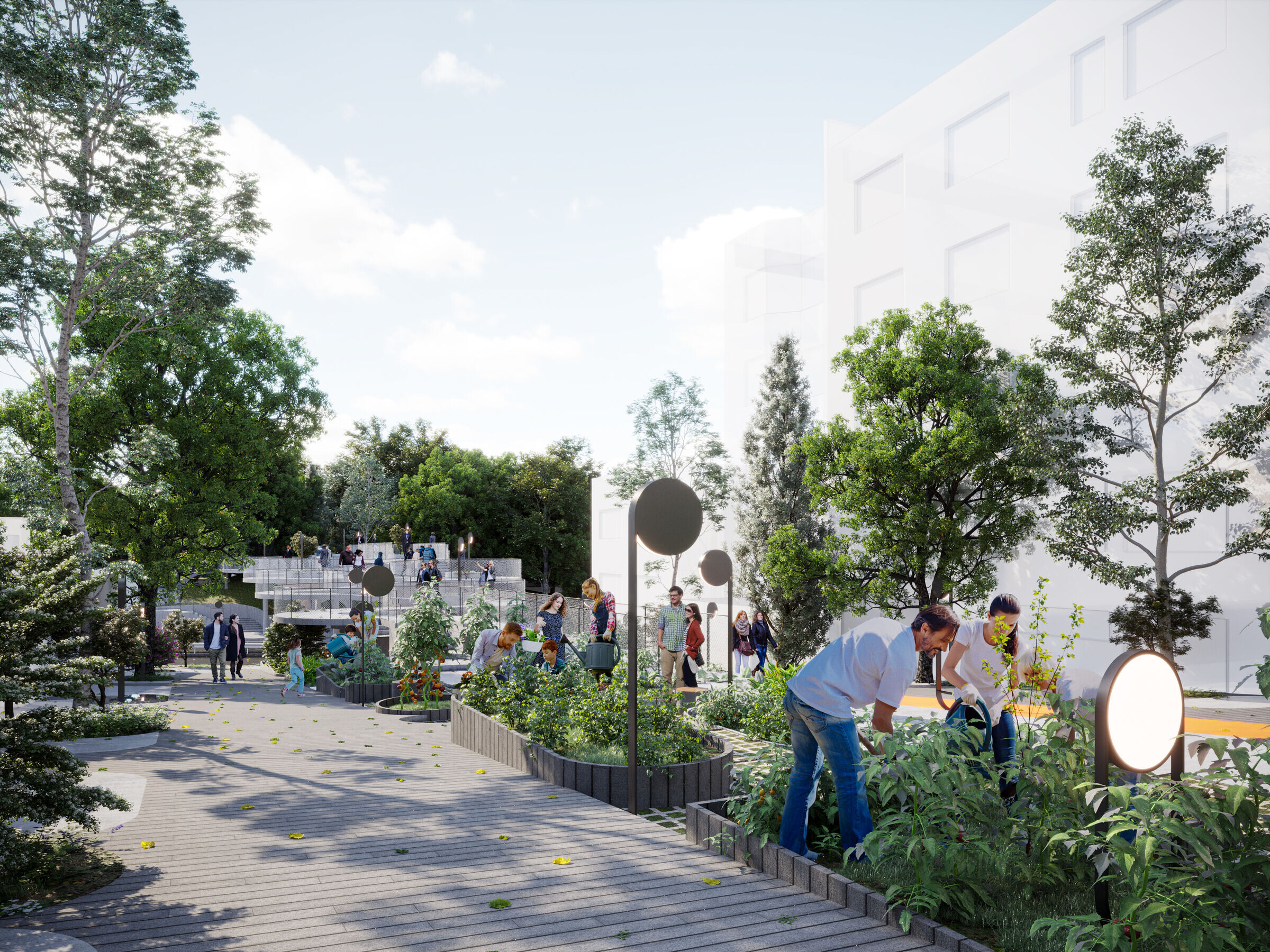
With respect to the points recognized, these important decisions were made by the design team:
1. Turning the Gandi pathway into a public urban platform and focusing on the stop points along the way.
2. Looking to the future of urbanism in Tehran and design for Tehran 2070.
3. Using the central concept of “play” as a common platform for social activity throughout the project.
4. Using the concept of “Terrace-Garden” in Iranian architecture in creating an urban monument in Vali-e-Asr and constructing the pedestrian and cycle bridge on Nelson Mandela Street.
5. Using the concept of a “Communal Garden” to enhance the residents’ cooperation in Palizvani Street.
6. Highlighting the project without compromising the view of Abbas Abad lands from Palizvani Street and vice versa.
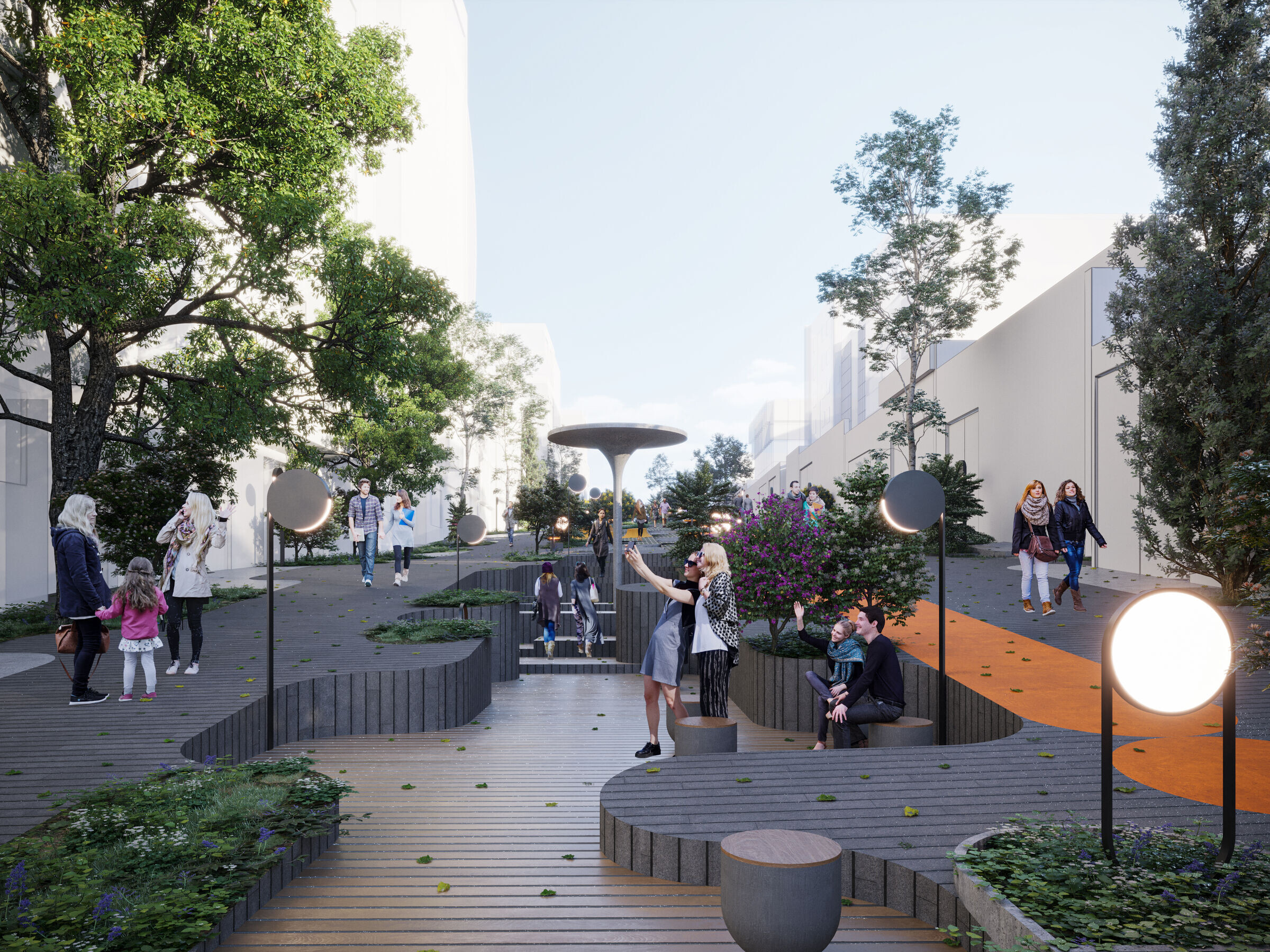
The outcome of this project was based on profound studies of the urban social structure, discussing the pressing needs and contemplating the existing limitations (such as the car access, resolving the staircase in Shafagh Street, the site topography, etc.). In designing this project framing questions like: “What are the most prominent aspects of Iranian architecture in the field of urban design and public areas?” and “Where is the position of cars in Tehran in 2070?” can be decisive.
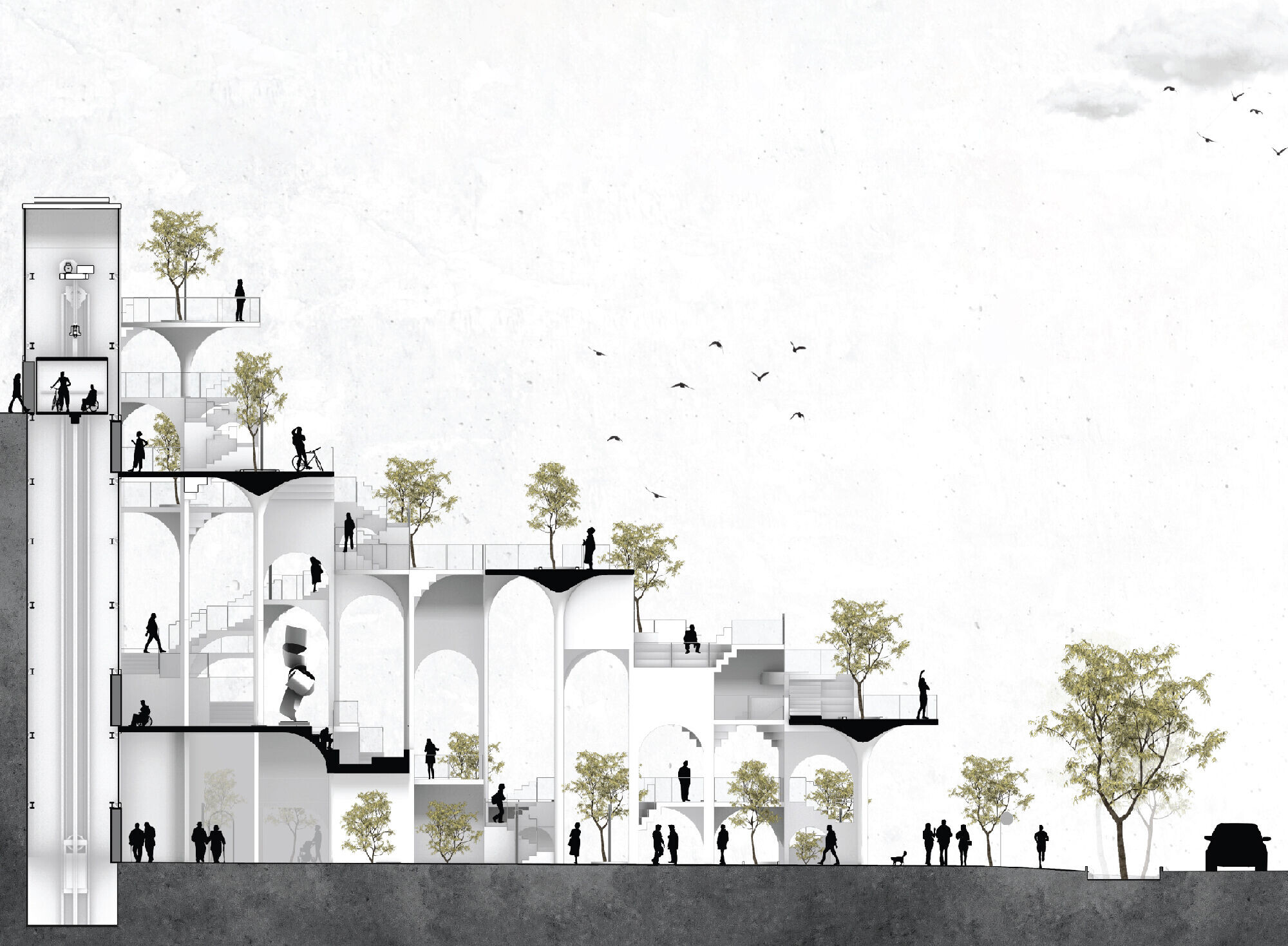


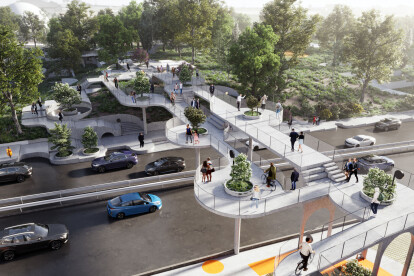














![Ac[COMMUN] Ac[COMMUN]](https://archello.com/thumbs/images/2023/11/26/tehran-platform-ac-commun--apartments-archello.1701003522.488.jpg?fit=crop&w=407&h=267&auto=compress)
